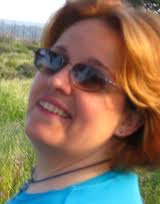Laoupi, Amanda
Adamantia (Amanda) Laoupi (1968- ) is a Greek archaeologist(a) responsible for defining a new interdisciplinary field of study – Disaster Archaeology, which is concerned with a  range of subjects that includes earthquakes, tsunamis, volcanic eruptions and asteroidal/cometary impacts, together with their local, regional and global effects. Laoupi has now expanded her views on disaster archaeology with the publication of her 2016 book, Pushing the Limits [1233], which can now be read online(j).>She followed that with Disaster Archaeology: The Science of Archaeodisasters [1963] in 2019. She has also written a book about disaster archaeology for younger readers.<
range of subjects that includes earthquakes, tsunamis, volcanic eruptions and asteroidal/cometary impacts, together with their local, regional and global effects. Laoupi has now expanded her views on disaster archaeology with the publication of her 2016 book, Pushing the Limits [1233], which can now be read online(j).>She followed that with Disaster Archaeology: The Science of Archaeodisasters [1963] in 2019. She has also written a book about disaster archaeology for younger readers.<
A number of her papers are available on the Internet(f), one(b) deals with comets and diseases, echoing some of the conclusions of Mike Baillie[892] as well as those of Fred Hoyle & Chandra Wickramasinghe. 2013 saw further evidence published that suggested that comets may have seeded life on earth(d). Additional confirmation came from data transmitted from comet Churyumov-Gerasimenko 67P in 2015 that revealed the existence of sixteen organic compounds(e).
Laoupi has also touched on the subject of Atlantis in a technical paper on catastrophist mythology[0629.9] presented at the 2005 Atlantis Conference. In her Disaster Archaeology website(c) she has 14 discussion headings relating to Atlantis. She concludes that the Atlantis story is a mixture of fact and fiction and perhaps is best related in her own words:
“The worldwide legend of Atlantis is a multi-layered ‘anthropological’ myth with strong cross-cultural parallels that echoes humanity’s experiences on mega-archaeodisasters, that had been filtrated through different symbolic languages. So, in this point of view, Atlantis as described by Plato didn’t exist exactly as a whole, but as hidden information of different origins (chronological, topographic, environmental, archaeological, astronomical, etc), like the Homeric Epics and other famous literature of the ancient world.”
Laoupi has also identified Homer’s Hephaestos as a comet or meteor god(g)(h).
(a) https://www.qconference-athens-2011.grazian-archive.com/amandalaoupi/index.html
(b) https://www.2010-q-conference.com/cometsanddisease/index.html
(c) https://archaeodisasters.blogspot.com *
(d) https://phys.org/news/2013-03-evidence-comets-seeded-life-earth.html#ajTabs
(e) https://www.bbc.com/news/science-environment-33720951
(f) https://archaeodisasters.blogspot.ie/
(g) http://www.drgeorgepc.com/DisasterArchHephaeLaoupi.html
(h) https://issuu.com/alaoupi/docs/laoupi._gods_in_heaven._ancient_greek___sanskrit_p
(j) https://issuu.com/alaoupi/docs/adamantia__amanda__laoupi._archaeod
